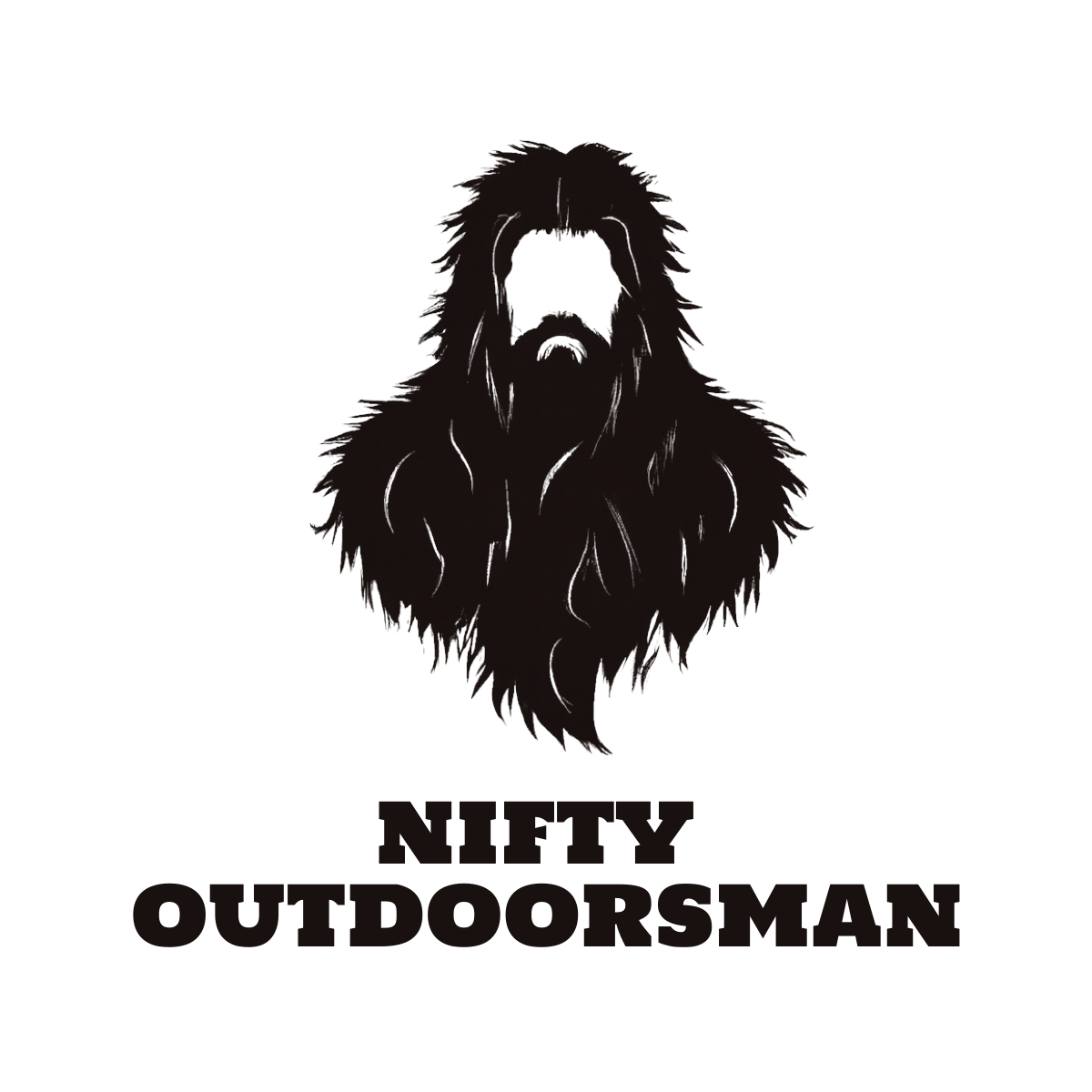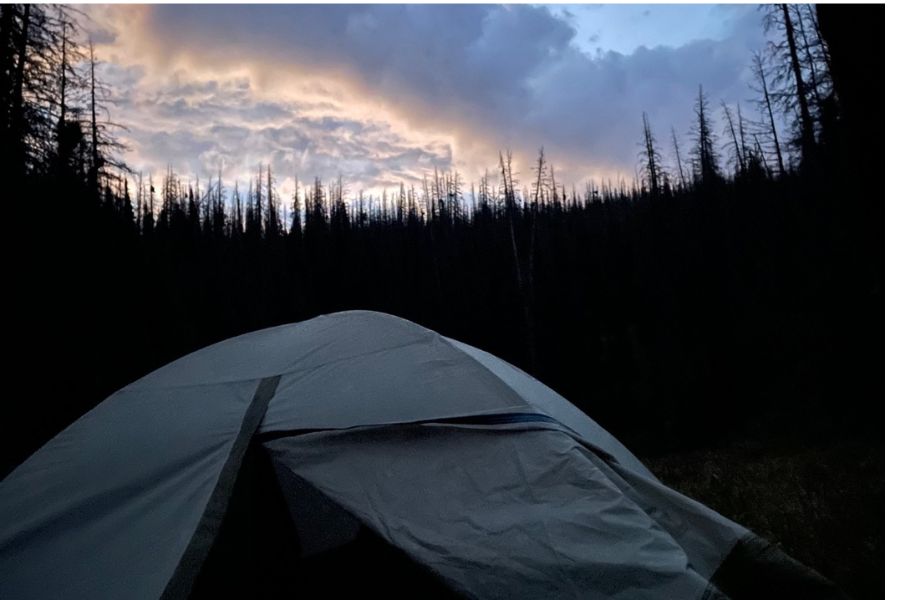When it comes to sleeping in the backcountry, or just any camping at all, you want to be comfortable. And it is often very difficult to get a good night’s sleep if you are not sleeping with the right gear.
So to see what the best shelter is, I will be comparing sleeping in a tent to a tarp to a hammock for camping, to see which one is better, what are the benefits of each one, which one is best and different situations, and which is the best sleeping option overall.
Tents
The tent is by far the most common camping option. You can get one-person tents, multi-person tents, hot tents, and outfitter tents. Tents are truly the most versatile and common, but they might not be the best option.
The biggest upside to tents, in my opinion, is the sense of security. While it might be a false sense of security as there is only a thin-cloth barrier, it is still nice knowing that you have a barrier between you and whatever is outside of your tent. While it might be rare to get eaten by a bear or mountain lion if you are 5 miles from your truck and it’s pitch black out it is nice knowing that you have some level of security.
Tents have the upside of having a lot of space. If there is only one person in a 2 person tent, you will have a lot of extra space for your gear being out in the elements.
The downside to tents is that they are heavy and take up a lot of space. A two-person tent can weigh upwards of 3 pounds and is 16 inches long. Compared to a tarp or hammock that weighs half to a third of that, it may be worth it to buy a tarp or hammock.
Hammocks
Hammocks are often considered to be one of the best ways to relax, but you can also sleep in them. Hammocks are lightweight and easy to set up, but what are the upsides and downsides to them?
Hammocks are very portable and light. A high-quality hammock is often very light and small so you will have plenty of room in your pack and the extra weight won’t be dragging you down. While you will have to carry straps with your hammock, it is not a huge deal as your setup will still weigh less than a tent.
Hammocks are among the easiest sleeping designs to set up, all you have to do is tether the straps to a tree and hook up your hammock. This means that if you are in a hurry and need to get set up fast, a hammock might be ideal.
With that being said, there is still a lot wrong with a hammock for your sleeping setup.
Hammocks are dangerous. All you have that keeps you from landing on the ground and very easily injuring your spin is a couple of straps. While you may think that most spine injuries occur from hitting your head, over 50% are from people hitting their butt. A drop straight on your butt from only 3 feet (approximately hip to waist height) is enough to damage your spine for life, and in a hammock, your butt is going to be the first thing to hit the ground.
Hammocks are not very comfortable either. When you are in a hammock you may think you are comfortable, but after a night laying with your butt below your head and knees you will wish you had brought a tent.
The other problem with hammocks is that they offer little to no protection from bugs or rain. So overall hammocks are probably the worst choice for sleeping or camping.
Tarps
Tarps are often overlooked as shelters, they are usually just used as a rain shelter but can be slept under. However, there may be a reason tarps are not the first choice people pick when they go camping. Here are the pros and cons of tarps.
Tarps are lightweight and can weigh a third of as much as a tent and not take up as much space. For people who like to hike ultra lightweight tarps might just be a good option.
Tarps can be used in many different ways and can be set up to fit any situation. Even if you only have two trees and a pair of trekking poles, you can still set up a tarp in many ways that will keep you dry and out of the elements.
There are 3 main downsides to a tarp shelter: A tarp has no defense against bugs so you will be at the will of any biting flys or mosquitos. A tarp doesn’t have any ground protection like a tent, so unless you bring an extra tarp to put under you, you will risk popping your sleeping pad. Lastly, a tarp does nothing in the way of keeping you warm as there are still 1 to 2 open ends for cold air to run through.
Which one is the best sleeping option
Now that we have gone through the pros and cons of each sleeping system, we can see which one is best in different situations and which one is best overall.
If you are going ultra lightweight and aren’t worried about bugs, insolation, or animals, then you may want a tarp. A tarp is an option that is a lot lighter than a traditional tent and safer than a hammock.
If you are going in as a group, you will want a tent. Tents are much more comfortable to sleep in with multiple people, especially when compared to other sleeping systems. There are also many different types of tents that can sleep anywhere from 2-10 people.
If you are going into an area with cold weather, you will most definitely want a tent. All the other options offer little to no insulation or little to no protection front the snow. Tents are closed on all ends and reflect heat better than any other option mentioned.
If you are in a very damp area, a tent would be the best choice. Hammocks offer no rain protection unless you have a tarp over your hammock and then you would be adding weight to your pack. Tarps, while they do keep most of the rain off of you, still have open ends for any water to get into and the water can run into and under your tarp and get your sleeping bag wet.
Conclusion
While there will always be a time and a place for tarps and hammocks, tents are the best option for camping. Tents offer the best protection from the elements and while they are heavier than the other options, they are oftentimes worth the extra weight for the extra comfort.

